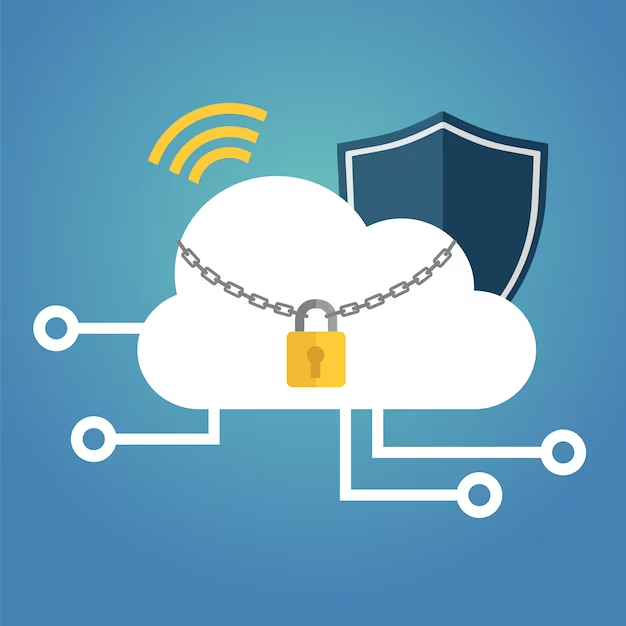Your digital footprint is becoming incredibly sought after. With a combination of Facebook, LinkedIn, Instagram, forums and more, it is now easier than ever to build a portfolio of an individual or business. Your information is used to register for every online service imaginable. This information is valuable and sharing of this can be quite intrusive depending on the service you register for. Without proactive control over your data, you can quickly leave yourself susceptible for Open Source Intelligence (OSINT).
Open-Source Intelligence (OSINT) is the collation of publicly available information on the internet.It defines the efforts of collecting, analysing and using information from publicly available web sources, including forums, libraries, open databases and even the dark web. Though OSINT can be used to gather commercially important business information and perform market analysis, it is also used in the context of cyber threat intelligence.
Why is It important to secure your business against OSINT?
Protecting your business against open-source intelligence (OSINT) is crucial due to several reasons related to cybersecurity, privacy, and overall business integrity. Here are some key reasons why safeguarding against OSINT is essential:
Data Privacy and Confidentiality:
Businesses often handle sensitive and confidential information, such as customer data, intellectual property, and trade secrets. OSINT techniques can collect and use this information if not properly protected.
Reputation Management:
Keeping a positive public image is important for business success. Information collected through OSINT can damage a company’s reputation, especially if it involves negative publicity, sensitive data leaks, or other harmful revelations.
Competitive Advantage:
Companies spend time and resources on research and development to get a competitive edge. OSINT can reveal proprietary information, giving competitors insight into strategic plans, product development, or other confidential aspects that could reduce the competitive advantage.
Cybersecurity Threats:
Information collected through OSINT can be used by malicious actors to launch targeted cyber attacks, such as phishing, social engineering, or other forms of cyber threats. Knowing what information is publicly available helps in strengthening defences against possible attacks.
Employee Safety:
Open-source intelligence can also collect information about employees, such as personal details and work-related activities. Protecting against OSINT helps ensure the safety and well-being of employees by lowering the risk of personal information being misused.
Regulatory Compliance:
Many industries have regulations and compliance requirements related to data protection and privacy. Not protecting against OSINT may lead to violations of these regulations, resulting in legal consequences, fines, and damage to the business’s reputation.
Intellectual Property Protection:
For businesses that depend heavily on intellectual property, such as patents, copyrights, and trademarks, OSINT is a threat. Unauthorised access to these assets through publicly available information can lead to infringement or counterfeiting.
Supply Chain Security:
Businesses are connected through supply chains. OSINT threats may go beyond the main organisation to vendors and partners. By protecting against OSINT, you also help the overall security of the supply chain.
Strategic Decision-Making:
Executives and decision-makers often use strategic information to make informed decisions. OSINT threats can affect the accuracy and integrity of this information, impacting the decision-making process.
Financial Impact:
Data breaches and security incidents caused by OSINT exploitation can have significant financial effects. This includes costs related to remediation, legal consequences, loss of business, and possible lawsuits.
National Security Concerns:
In some cases, businesses may be part of sectors with national security implications. OSINT threats targeting such businesses could have wider repercussions beyond the immediate business impact.
Steps to secure your business:
Securing your business against open-source intelligence (OSINT) involves implementing a comprehensive strategy to protect sensitive information that could potentially be gathered from publicly available sources. An effective cloud security solution taken on time can greatly reduce your losses as a result of this. Here’s a more detailed description of the key measures you can take:
Employee Training:
- Hold thorough training sessions to increase awareness about the importance of protecting sensitive information.
- Give employees practical examples and scenarios that show the potential risks of sharing too much on social media and other public platforms.
Social Media Policies:
- Create and enforce clear social media policies in your organisation.
- Urge employees to regularly check and change their privacy settings on both personal and professional social media accounts to limit the visibility of their information.
Information Classification:
- Set up a strong system for classifying and categorising sensitive information based on its importance and confidentiality.
- Use access controls to make sure that classified information is only accessible to individuals who really need it for their specific job roles.
Monitor Online Presence:
- Monitor your company’s online presence regularly, including social media channels, forums, and customer review platforms.
- Use automated tools to get alerts for any mentions of your company, key personnel, or critical business information.
Secure Website and Systems:
- Make the security of your organisation’s website and online systems a priority by using encryption protocols, multi-factor authentication, and doing regular security audits.
- Be alert for software updates and patches to fix potential vulnerabilities quickly.
Limit Public Information:
- Be careful when sharing information publicly, avoiding unnecessary disclosure of details about internal operations, infrastructure, or employee specifics.
Vendor Security:
- Check and ensure the cybersecurity practices of your vendors and partners, knowing that their vulnerabilities may affect your business.
- Set up secure communication channels and agreements with vendors to keep a high level of security in your supply chain.
Incident Response Plan:
- Make and update an incident response plan regularly to effectively deal with and reduce potential security breaches.
- Do simulated exercises and drills to test the efficiency of the plan and train personnel on how to handle security incidents.
Employee Background Checks:
- Do thorough background checks during the hiring process, especially for individuals in sensitive positions.
- Confirm the accuracy of information given by potential employees to ensure a reliable workforce.
Legal Measures:
- Stay updated about and follow relevant data protection and privacy laws that apply to your business.
- Review and update your practices regularly to stay compliant with changing legal requirements.
Cybersecurity Awareness Training:
- Do ongoing cybersecurity awareness training programs to teach employees about various cyber threats, including social engineering attacks.
Work with Cybersecurity Professionals:
Think about working with cybersecurity professionals or firms to do regular assessments, penetration testing, and audits of your organisation’s security infrastructure.
protecting your business against open-source intelligence is essential for safeguarding sensitive information, maintaining a positive reputation, complying with regulations, and ensuring the overall security and integrity of your organization.By taking these detailed measures and with an expert cybersecurity consultant, you can build a robust defence against open-source intelligence threats and create a resilient security posture for your business. Remember that cybersecurity is a dynamic field, and staying proactive and adaptive is crucial in the ever-evolving landscape of cyber threats.










